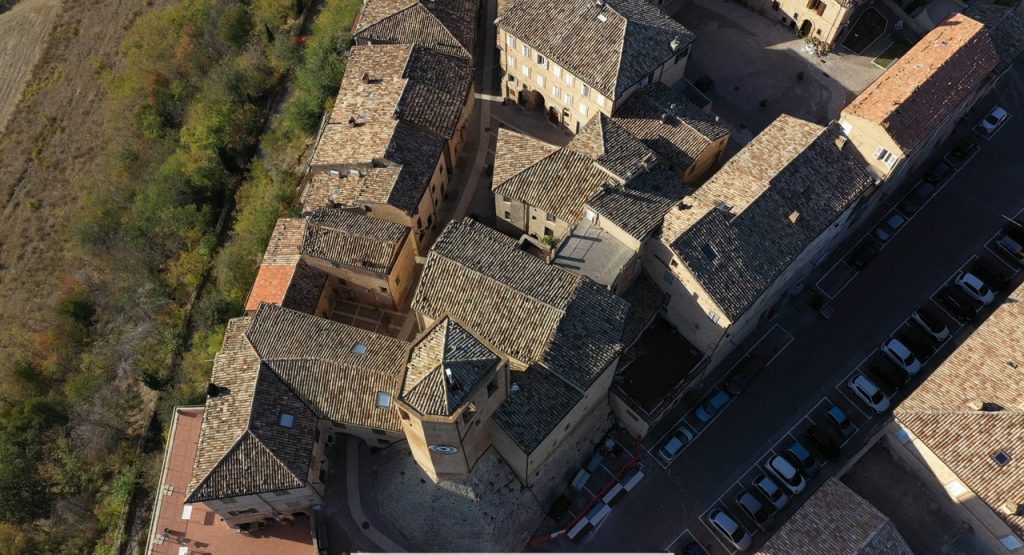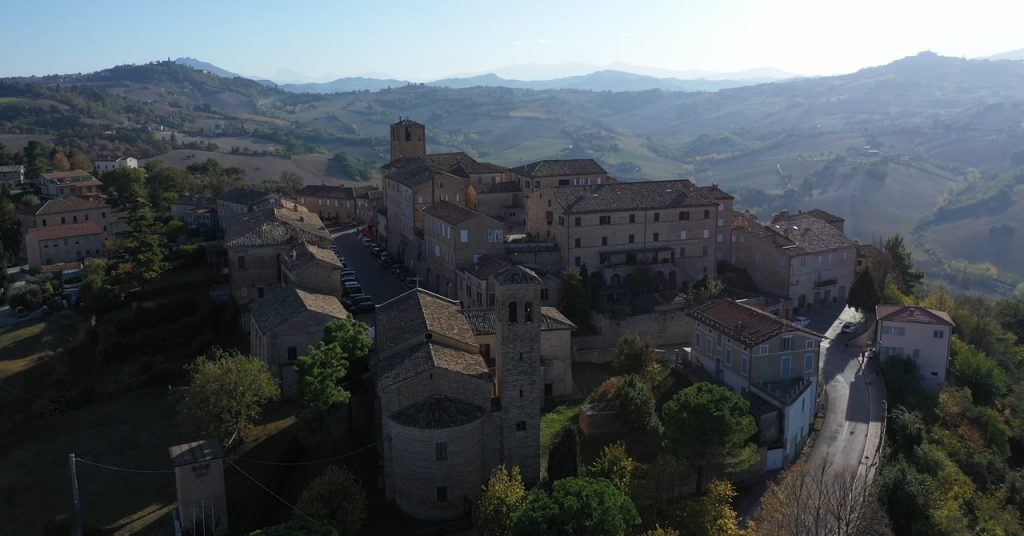The first traces of a settlement date back to the time of the Picenes people who lived from the ninth to the third century B.C. It is to be considered that the territory of the current municipality of Monteleone di Fermo, about 8 square kilometers, was already inhabited in the 8th -7th century B.C. when the Picenes gave rise to a flourishing settlement in the area overlooking Colle Ete di Belmonte Piceno.
The Picenes were replaced by the Romans with the centuriation of the Tenna Valley wanted by Augustus who reached the Ete Vivo. The Romans preferred to live in the plains, near the abundant streams of the territory where the villae, the farms dedicated to the cultivation and breeding of cattle, were born. We know that from the 1st century B.C. the whole area was under the jurisdiction of Falerone already populated by veterans, the Roman soldiers of the army of Pompey who received as gifts fields to be cultivated as compensation from the Roman army.
With the fall of the Roman Empire began the raids of Goths, Visigoths, Huns up to the Lombards. During these long and continuous raids inhabiting the plains was very dangerous so, to find shelter, the population took refuge in the hills huddling in small villages that were later on fortified by defensive walls.
In the following century, the XI, there was a significant period of settlement. In 1019 there is news of the castle of Torricella (or Torrita) near the stream Lubrìco, towards the border with Montelparo and Sant’Elpidio Morico; the same year is documented the fortified place of Catigliano, with the church of San Martino, that also borders Montelparo, the church of Santa Maria in Paganeco (Paganico), on the slope overlooking Servigliano and Belmonte Piceno and the castle de Leoni, on the relief that stands on the court of San Marone. In 1050, 1099 and 1118 is attested the castle of Càsoli, with adjoining church of Santa Maria (later entitled to Saint John the Baptist), erected on the site of a previous place of worship; nearby was the castle of Colle or Monte Leguni (Legoni).
With the passing of time from the tower began to build the walls, with a massive entrance door, which was to protect the small town and its inhabitants, which made this town a small outpost of great prestige: a coveted watchtower that guarded the whole valley to the sea.
With the decline of the economic and political power of Farfa, between the twelfth and thirteenth centuries the municipality of Fermo implemented a decisive expansion between the basins of Tenna river, of Ete Vivo river and of Aso river and secured an area on which it exercised political, administrative and economic control. Among the more than two hundred milites “lords of the territory” who in 1252, in exchange for protection, made an act of submission to Fermo and took its citizenship, four were of Torre Càsoli and six of Catigliano.
On 13th of July 1269 the “community of the men of the castle of Monte Legoni” was formed, which also brought together the once inhabitants of Catigliano and Torre Càsoli: together they recognized themselves as Monte Leone. It’s the “Castle inner living” phase.
From the country fortresses small military chiefs agree to move with their men in more armed and safe sites.
The name Monteleone is present for the first time in a document of 1208 and is probably derived from Farfenses, a lion was depicted in bas-relief in bronze of the bell of the ancient rural church dedicated to San Marone, in the center of the Lombard court, then Farfense.



